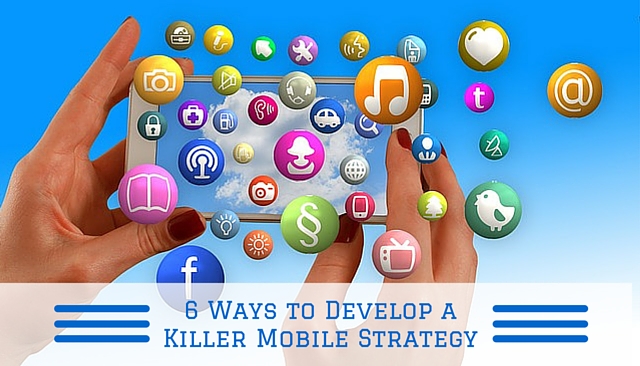
1. Mobile Website
When thinking about your website and it’s user experience, mobile should be the top priority. As mobile searches have officially surpassed desktop, it is vital to have a website that meets the mobile needs of your customers. From design to functionality and speed, there are key factors that cannot be overlooked.
Navigation – As mobile screens are naturally smaller than desktop screens, navigation should be simple and clear. Mobile users want to find what they need quick and easily and don’t have a lot of time or patience for sites that don’t clearly provide the path for them to get what they need. Ensure that the main pages are accessible at the top of the page and at the bottom. A search bar or icon is also good to have at the top so that users can enter keywords to find the content that they’re looking for.
Content – When publishing and structuring content on your mobile website, consider the most important information that your customers would want to see first. If you have a brick and mortar business, location, hours, and contact details should be clear on the homepage if a mobile user needs to know how to get to your location, the times that you’re open, and how to contact you for information. Other important content would be an overview of your products and services so that the customer knows how your business can meet their needs. Keep it short, concise, and to the point.
Features – The use of buttons on your mobile site is crucial to a great user experience. Traditional text links can be difficult to click on using fingers on a mobile device, while buttons have larger surface space that makes it easy to click with one touch of the finger. Add social media buttons that make it easy for mobile users to connect with your brand.
2. Local Search
Local search is is another vital component of your mobile strategy, particularly if your business is conducted in a physical location that customers must visit. Claiming and updating listings on Google, Bing, Yelp, and other local search engines and directories helps to improve your presence within the local search results. Having accurate and claimed listings will make it easier for your customers to find you while searching on their mobile devices.
3. Mobile App
The use of mobile apps is steady rising and brands should consider whether having a mobile website is enough for their customers or if they require a more personalized experience that is associated with an app. Mobile applications are not necessary for all businesses, but there are some important reasons why some are including:
- Personalization: Create personalized experiences for your customers to improve engagement, value, and brand image such as shopping lists, coupons, take reservations, and make product recommendations, for example.
- Loyalty: Your app can be the mobile home base of your loyalty program and provide opportunities for customers to interact, earn or claim rewards, and more.
- Communication: Some businesses also use their mobile apps to communicate and distribute relevant content to their users.
- Commerce: Lastly, mobile retailing is a big objective for businesses that sell products. Delivering a secure, convenient, and easy to use shopping experience to customer adds tremendous value and brand loyalty.
4. Geo-fencing
Geo-fencing is truly growing with the use of beacon technology for storefront businesses. Through mobile apps and geo-fencing, customers can receive push notifications about products, deals, coupons, and announcements when they are within a certain radius of the physical location.
5. Email Marketing
Similar to mobile websites, emails should also be optimized for mobile devices first. This means content should be targeted, easy to read, and very concise. There should be a bigger use of buttons versus text links. Another important factor is design and the use of images and graphics. Wow the users with beautiful and stunning images that relate to your content. Make them clickable to drive traffic to your mobile website.
6. Social Media
Lastly, most social media usage takes place on mobile devices, therefore, your mobile strategy should always include a social element. Make it easy for users to connect and reach your social profiles through your website, application, and email. Provide incentives for social media engagement or provide exclusive offers and contests for your social media fans.


